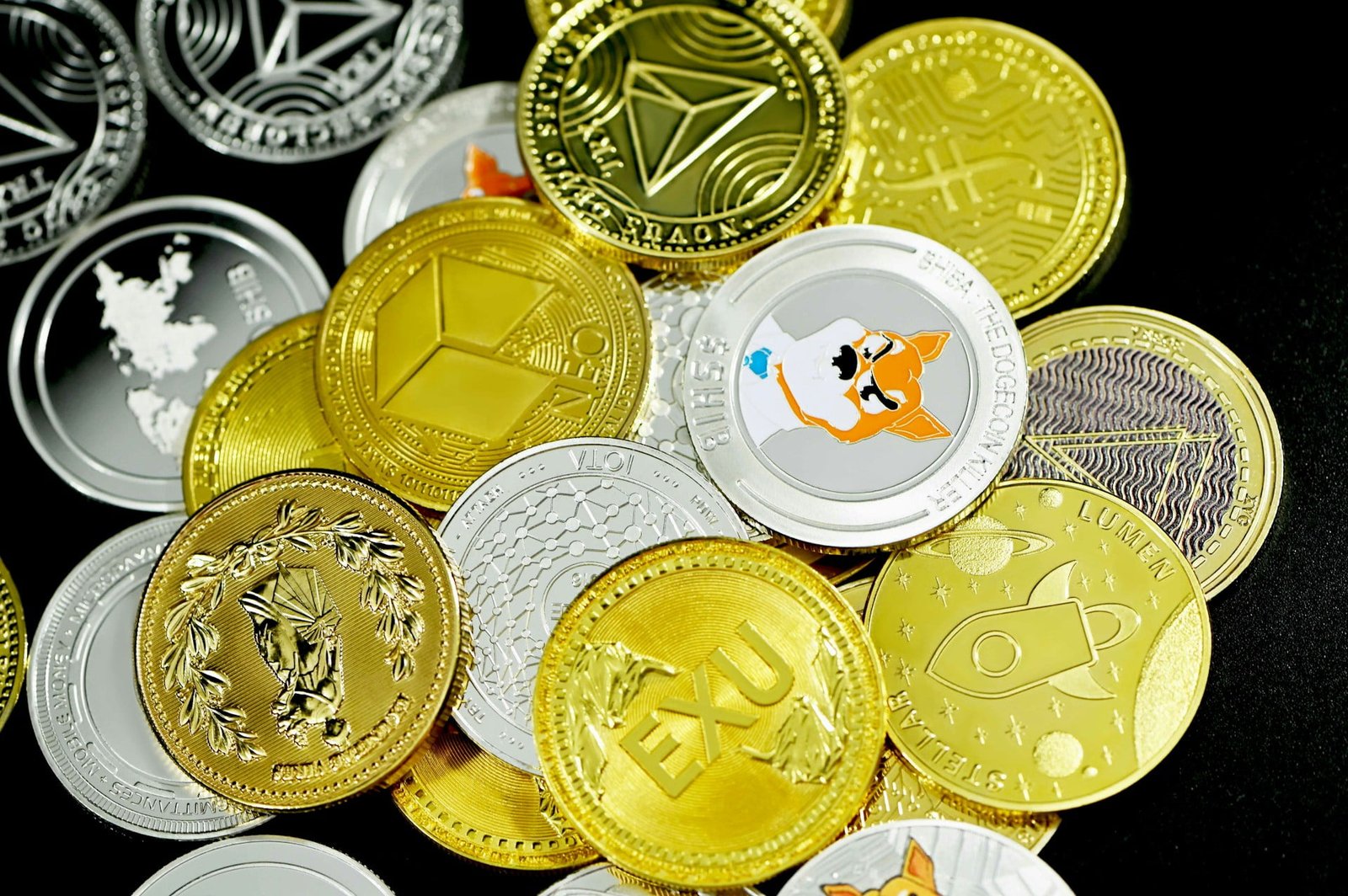Coin development has played a significant role in the ever-evolving world of cryptocurrency since it makes it possible to create distinctive tokens with various uses and increases the ecosystem’s adaptability. Stablecoins are a noteworthy invention that primarily aims to counteract the volatility and instability associated with traditional cryptocurrencies.
Three fundamental financial functions are represented by a stablecoin: unit of account, store of value, and medium of exchange. This distinguishes it from other cryptocurrencies and gives it a useful value that is measurable, something that volatile cryptocurrencies do not. This blog explores the main facets of stablecoin defi staking platform development services, focusing on important elements that are expected to propel stablecoins to unprecedented heights by 2024.
The Definition of Stablecoin
Stablecoins, which are cryptocurrencies having a fixed value that is pegged to particular assets like national currencies or gold, alleviate the volatility of decentralized marketplaces. Stablecoin, as opposed to other cryptocurrencies, lessens volatility while preserving stability for useful usage in financial transactions.
Benefits of this relatively new but significant advancement in the cryptocurrency sector include reduced transaction costs, accessibility from anywhere in the world, and in certain cases, even the ability to combat inflation. A noteworthy phase in the development of cryptocurrencies that addresses the issues related to price volatility is represented by stablecoins.
2024 Stablecoins: Various Kinds
There are several types of stablecoins, and they all use different methods to maintain their fixed value, such as
Fiat-Collateralized Stablecoins
- Examples include TrueUSD, USD Coin (USDC), and Tether (USDT).
- They are supported by equivalent reserve currency deposits and are linked to fiat currencies.
- Transparent reserve audits help them maintain a 1:1 peg, but full collateralization raises questions.
Stablecoins with crypto-collateralization
- For instance, MakerDAO’s DAI.
- Reserves of other cryptocurrency, like Ether, support them.
- They are susceptible to collateral token volatility, but they are kept stable by automatic issuance/burning and over-collateralization.
Stablecoins Collateralized with Commodities
- The DGX token from DigixDAO is one example (connected to physical gold).
- They have reserves stored in the underlying asset and are based on commodity values.
- Using the strength of commodities prices, transparency, and collateral audits are essential to stability.
Computerized Stablecoins
- FRAX and Ampleforth are two examples.
- For stability, they make use of supply-adjusting systems and built-in protocols.
- Some projects have to be closed as a result of the difficulties they have creating algorithms that are resistant to conjecture.
Algorithmic Stablecoins with Seigniorage
- Empty Set Dollar (ESD) and Basis Cash are two examples.
- During peg deviations, holders may claim shares and get seigniorage.
- Through algorithmic contractions and expansions, it seeks to stabilize value; yet, in volatile markets, its efficacy may be better demonstrated.
Variable Stablecoins
- Elastic Set Dollar, for instance.
- maintains the value of each token by automatically adjusting the overall supply.
- Overall stability is ensured via elasticity, which permits greater token minting in response to growing demand.
What Procedures Are Included in the Creation of a Robust Stablecoin?
Creating a stablecoin, a cryptocurrency meant to combat volatility is an alluring and profitable endeavor. The following are crucial actions for creating a decentralized stablecoin:
Select the Stability Model
Choose between algorithmic protocols, commodity collateralization, or fiat/crypto collateralization as the stability model. It determines how supplies are managed, necessitating adequate reserves or elastic supplies to offset volatility.
Choose the Linked Asset
Decide which asset, such as stable commodities or widely traded fiat currencies, to peg with the stablecoin. To create a stablecoin, it is important to align with a stable mainstream asset.
Put Stability Protocol into Practice
Create smart contract protocols by utilizing asset linking and the stability model. The code mints, burns, and maintains reserves for collateralized currencies to impose rational guidelines on the token supply.
Create Reserve Accounts
To guarantee a 1:1 match with circulating currencies, create reserve accounts for stablecoins backed by cash or cryptocurrency. The reserves are kept liquid, auditable, and under custodian management to preserve the peg and support redemption value.
Finalize Auditing and Validation
Make sure stablecoins are validated or their reserves are verified by external audits. Continuous audits strengthen confidence by evaluating governance structures and modifying controls and guidelines.
Release and Distribute Tokens
After stability mechanisms are proven, generate and release stablecoin tokens. A transparent distribution plan combines sales, mining, and airdropping. User access is made possible by integration with wallets and exchanges, which guarantees enough liquidity for active trading from launch.
List of Cryptocurrency Exchanges
List the stablecoin on major exchanges for adoption to facilitate trading against BTC, ETH, and stable fiat pairs. Stablecoin purchases, sales, and conversions are made easier by active trade.
Expand Integrations and Utilities
To expand circulation, pursue integration with payment systems, retail platforms, decentralized finance protocols, cross-border solutions, and other use cases. Business development and incentive schemes encourage the natural adoption of stablecoin stability features.
Monitor and Preserve Stability
To safeguard the stablecoin, continue implementing reserve management, governance, and algorithm upgrades. As market conditions change, responsive mechanisms guard against such problems.
Establish Transparent Practices
Trust and transparency are ensured by regular public attestations on reserve holdings, smart contract operations, etc. Trust in stability and sustainability is bolstered by parameters for altering systems, community insight, and independent audits.
The Reasons for the 2024 Stablecoin Breakout
In the constantly shifting world of cryptocurrencies, stablecoins stand out because they bring stability to the frequently erratic market. Here are several factors that highlight the intriguing trajectory of stablecoins as we go into 2024. Among them are the following:
lucid business case
The rise of cryptocurrency assets has not been without criticism, particularly in light of the extreme volatility of assets like NFTs and Bitcoin that have resulted in large losses. But it’s becoming increasingly clear how tokenized payments result in real savings and operational efficiencies. The large sums of money that the biggest financial institutions in the world have invested in these applications highlight their clear financial advantages.
The rise of tokenized transactions backed by USD makes sense given that the majority of transactions, including those involving US dollars, are already completed online. Stablecoin acceptance seems to be well-positioned to continue due to variables such as low costs, increased efficiency, and the upgrading of the US dollar.
Declining Volatility of Cryptocurrency Assets
In 2024, a big question is raised by the growing demand for lower-volatility crypto assets after the turmoil in digital assets. Some of the questions are if institutional investment is driven by interest in stablecoins, or if improvements to stablecoin protocols draw TradFi investment. Whichever way the trend goes, it simultaneously changes the market.
In addition, the excitement around the launch of spot Bitcoin exchange-traded funds (ETFs) confirms the increasing demand for reliable, low-volatility crypto assets. The probability of scams or panic selling, which were reported by retail investors in 2022 and 2023, decreases as institutional capital pours in, which eventually results in lower volatility. This revolutionary change gained further impetus with the adoption of spot Bitcoin ETFs earlier this month.
A Mirror of the Dominance of USD
In 2024, stablecoins—especially those correlated with the US dollar—are expected to play a big impact on the regulatory environment surrounding cryptocurrency assets in the US. Stablecoins are becoming more widely accepted in the legal, accounting, and finance industries despite unfavorable governmental actions and discussions.
This adoption is facilitated by AICPA guidelines, prominent stablecoin Tether’s (USDT) transparency initiatives, and Circle’s favorable position with increased U.S. interest rates. Stablecoin transactions, which account for over 90% of all transactions, offer enormous geopolitical prospects. Countries that adopt stablecoins are well-positioned to take the lead in discussions and make appropriate adjustments to shifting trends in a competitive monetary landscape.
Conclusion
The evolution of stablecoins in 2024 offers an interesting story for those interested in investing in the cryptocurrency market. Stablecoins come in a variety of categories, such as fiat-collateralized, crypto-collateralized, commodity-collateralized, algorithmic, seigniorage algorithmic, and elastic stablecoins, which provide developers with a range of choices to meet different market demands. A successful stablecoin can be created by following a set of stages, which include selecting a stability model and using open practices.
Stablecoins are becoming more and more important in the financial landscape as a result of their proven business model, decreased volatility compared to other cryptocurrency assets, and ability to mirror the USD’s supremacy. Stablecoins, especially those linked to the U.S. dollar, are a solid foundation for stability in the constantly changing cryptocurrency market because of their indisputable financial advantages, efficiency improvements, and modernization of transactions. Stablecoin systems’ ongoing development, respect for open standards, and assimilation into mainstream financial systems contribute to their su


